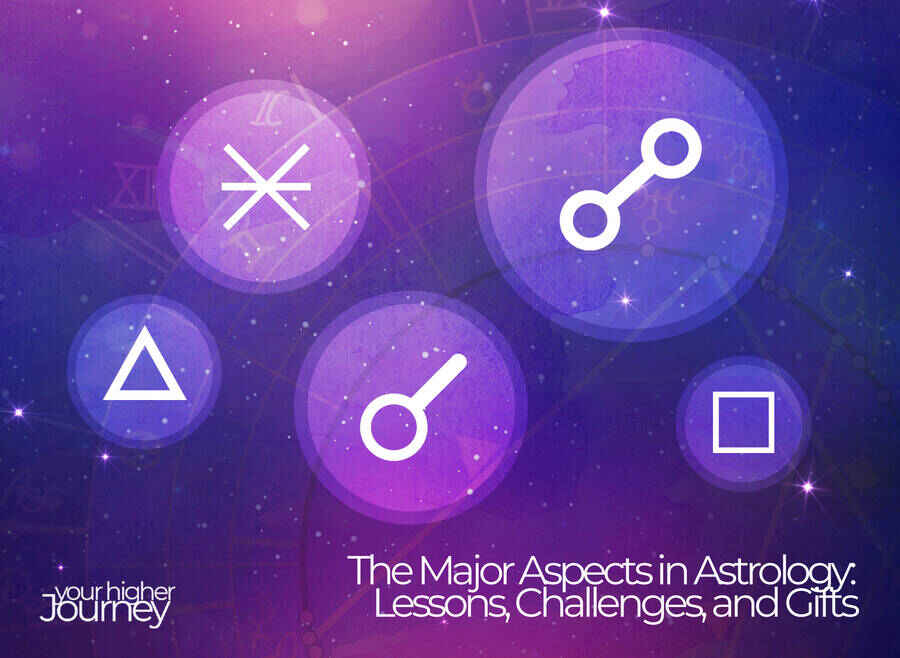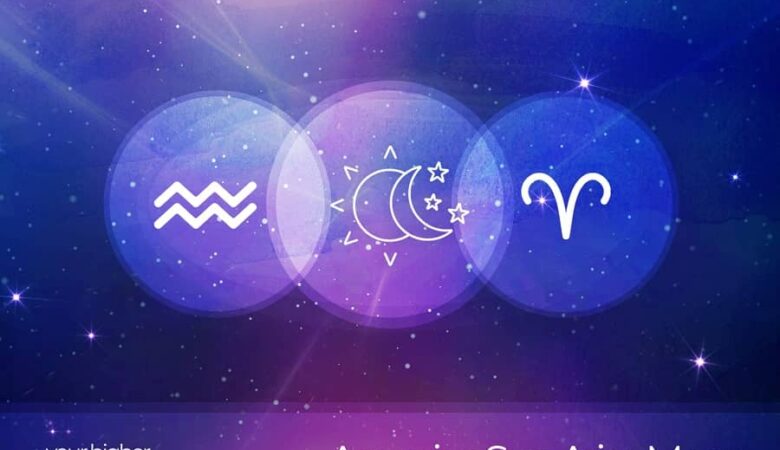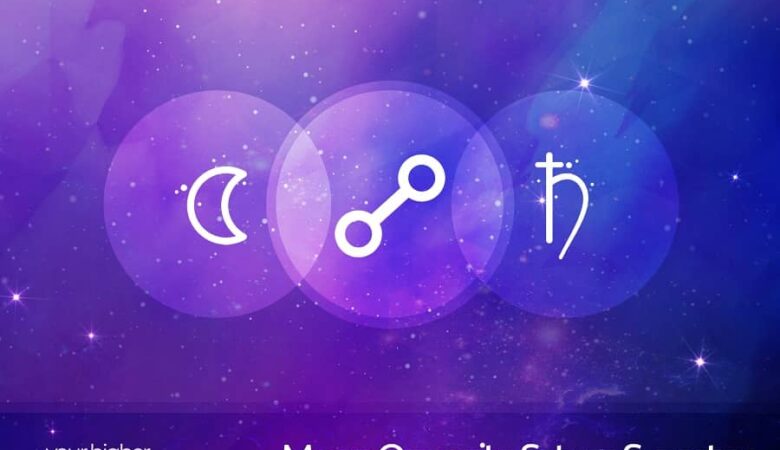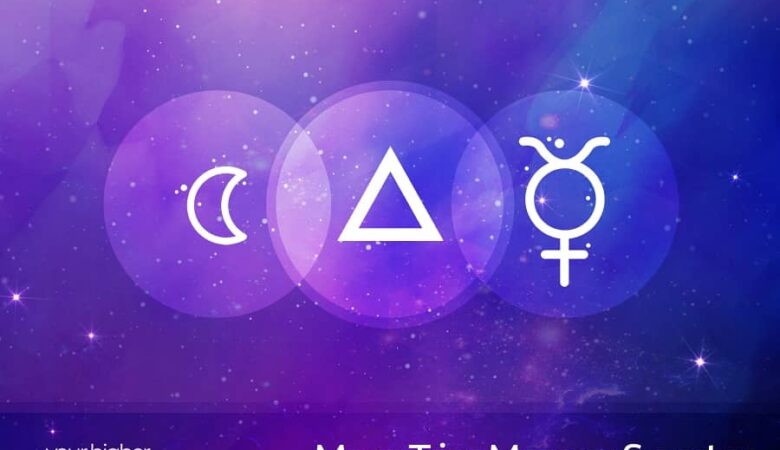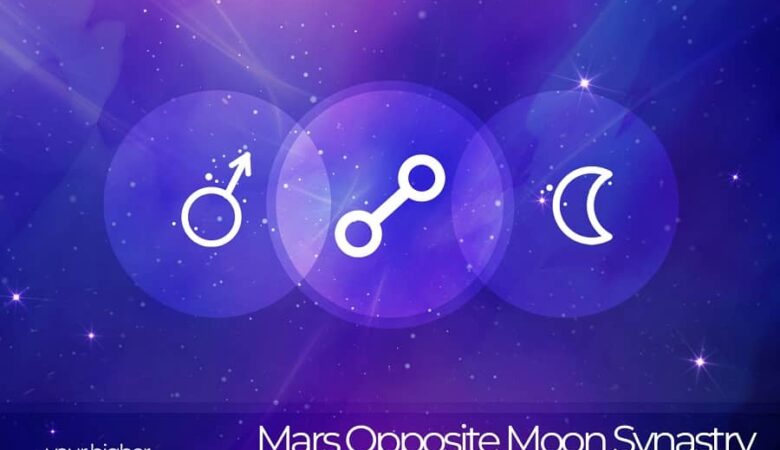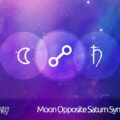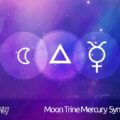Aspects are the positions of celestial bodies relative to one another in space. When planets align, they create a major aspect that has an effect on your life. There are many different types of aspects, and it is important to be aware of them before you go through with some decisions.
This article will discuss the major aspects in astrology. You’ll learn what each aspect symbolizes, how difficult or favorable they may be for you, and any considerations that may be necessary when working with them!
What Do Aspects Mean In Astrology?
An aspect lets us know where planets, including the sun and moon, are in relation to each other. In our birth chart, these aspects are shown as a series of lines. When calculating your aspects, you’ll need to know the signs of your planets as well as their degrees.
Aspects are determined by measuring the geometric angles that the planets form with each other. These angles are determined by dividing the 360-degree circle by whole numbers such as 2, 3, 4, and 6.
Metaphorically, aspects are like positions within a relationship. They can be difficult or easy for you, depending on the energy they produce in your life.
What Is The Difference Between Major Aspects And Minor Aspects?
There are major and minor aspects in astrology. The difference between these two types of aspects is their effect on your life; they both have a different meaning for each person’s birth chart. A major aspect means that there is a close alignment between two planets or celestial bodies, whereas minor aspects are weaker.
A minor aspect is a smaller alignment. These aspects don’t often produce as much energy, and they can be considered favorable or difficult depending on the individual person.
The Conjunction Aspect
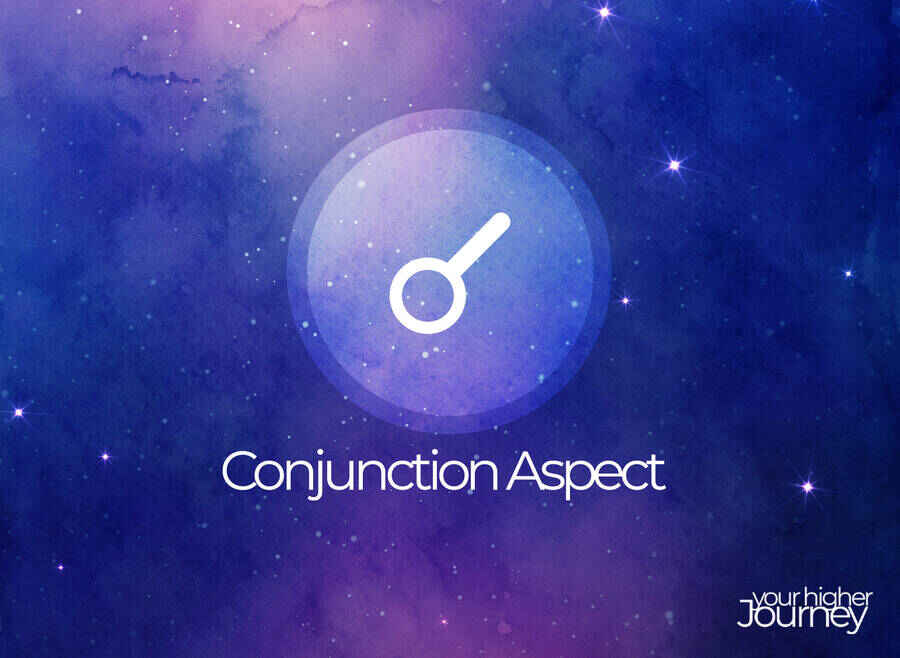
The Conjunction aspect occurs at degrees or when two planets are within 10 degrees of each other. This is the strongest aspect in astrology, so it will make a noticeable difference in your life.
In general, a conjunction is a positive influence. It tries to combine energies in your life in order to create balance. However, if there are other difficult aspects in your chart, a conjunction may intensify and contribute to the problems. Essentially, this aspect points towards a focal area in your life and directs all of your energy towards it.
The Opposition Aspect
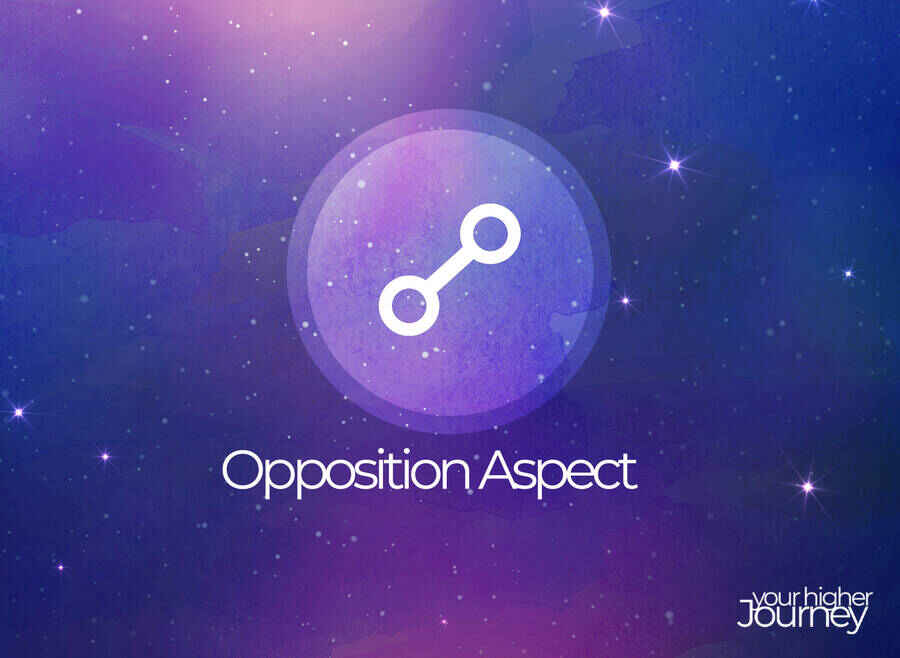
The opposition aspect occurs at 180 degrees, or when planets are within 9 degrees in either direction of 180 degrees. This aspect represents tension and challenge. The two planets that oppose each other may be about to enter into a conflict, or they could already be in one.
The opposition aspect is known as unharmonious. It has the potential to bring strain, discordance, or separation along the life path. However, the opposition aspect is seen as less negative than it was in ancient times. The challenge of an opposition brings the potential for growth, change, and perspective.
The Trine Aspect
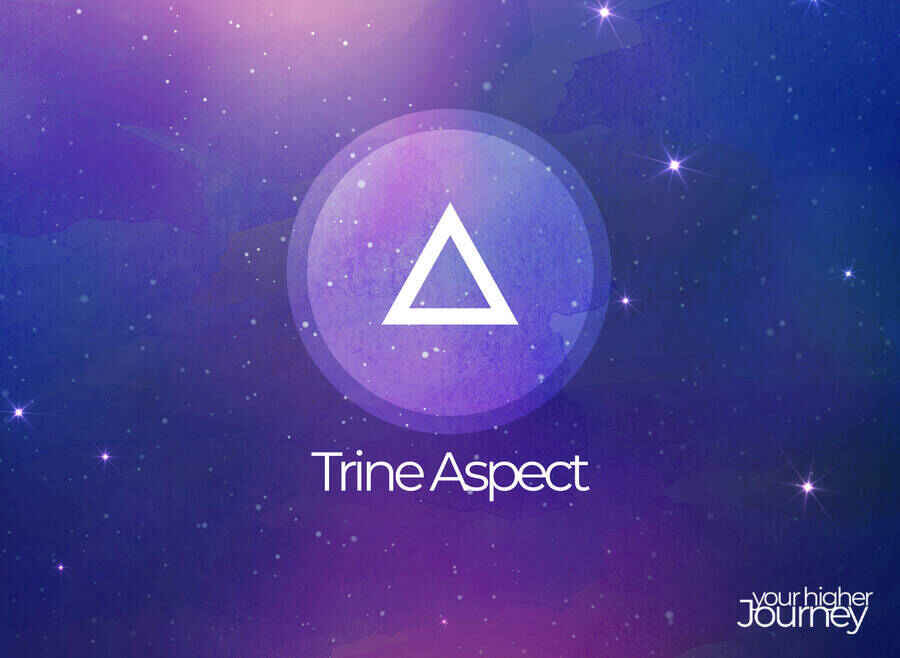
A trine aspect occurs when two planets are 120 degrees apart or within 9 degrees of 120 degrees in either direction. This aspect is seen as harmonious.
A trine is the most favorable aspect because it gives an edge of advantage, brings good fortune, and makes life much easier. Conflicts between these planets, if occurring at all, are not very intense. The trine represents flowing energy that is helpful in opening opportunities and removing obstacles.
If there are several trines in an individual’s chart, this may lead to an issue with laziness and weakness. This is because if everything goes smoothly for us in life, there isn’t much room for growth or change.
The Sextile Aspect
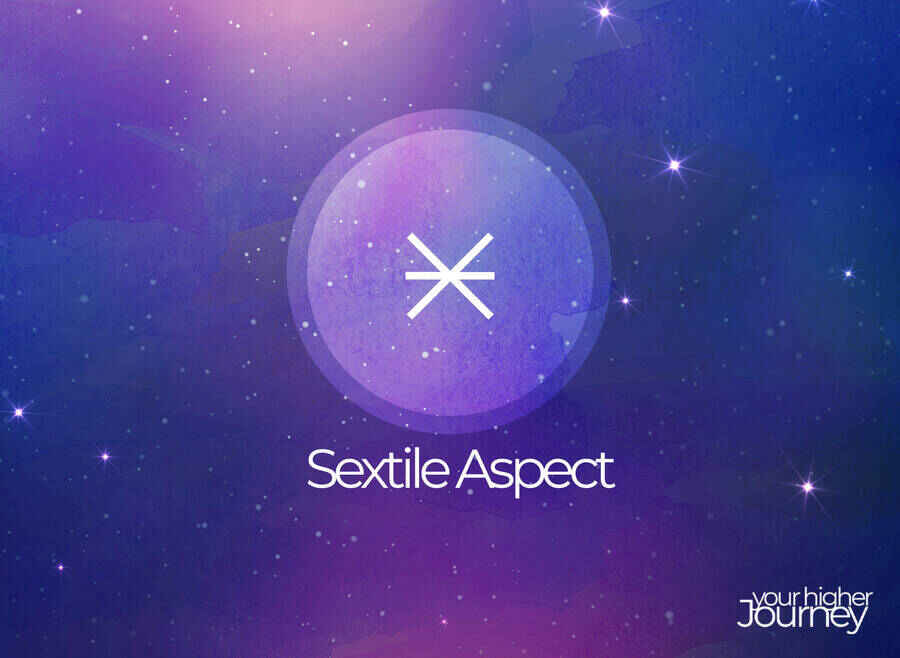
A sextile aspect occurs when two planets are 60 degrees apart, or within 6 degrees in either direction of 60 degrees. This is another harmonious aspect, similar to a trine.
A sextile means that the two planets are on good terms. They can provide each other with assistance, like a helping hand, and they have the potential to bring out hidden talents and abilities. Since it is less strong than the trine aspect, it may require a bit more effort to create a harmonious flow. This aspect is less of a “hand out” and more of a “hand up.”
The Square Aspect
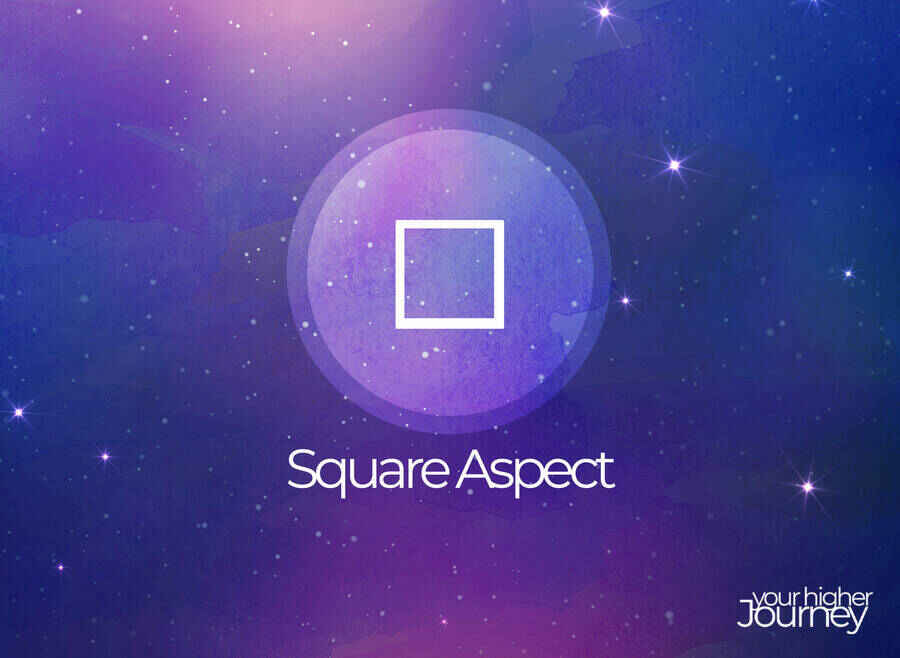
A square aspect occurs when two planets are 90 degrees apart or within 9 degrees in either direction of 90 degrees. This aspect is known as “hard” and is quite angular, representing a conflict or challenge.
A square aspect can be a wonderful opportunity for growth, but it also has the potential to cause pain and sorrow. This aspect is not seen as harmonious, but rather adversarial. All lessons will be learned by facing obstacles. This aspect indicates an area where the individual can develop drive and strength by overcoming difficulties. However, this path to success won’t be very enjoyable, or even fair.
The Major Aspects In Synastry
While the previous section discussed the major aspects in astrology, they also play a role in synastry. Synastry is when one person’s chart is compared to another person’s chart. This can teach us about how people interact with each other. We can also use synastry to predict the potential of a relationship.
1 Conjunction in Synastry
When a conjunction occurs in synastry, it is the most favorable aspect. A conjunction in synastry means that two people are aligned and compatible with each other, which makes them a perfect match.
2 Trine in Synastry
A trine aspect in synastry is also seen as a favorable aspect since it brings good fortune and makes life much easier. A trine aspect in synastry is an indication of a healthy and happy relationship, with no major difficulties.
3 Opposition in Synastry
An opposition aspect can occur when two people are in synastry. This is the most challenging aspect, and it has a tendency to bring strain or discordance. The opposition may be a difficult aspect, but it can also be seen as an opportunity for growth.
4 Square in Synastry
The square is the most challenging and rigid of all aspects in synastry. This is because the square aspect indicates a process of overcoming obstacles, and it will teach us all lessons along the way.
5 Sextile in Synastry
When there is a sextile in synastry, this is a harmonious aspect. It can provide each person with assistance, and it has the potential to bring out hidden talents or abilities. These two individuals will be on good terms, and they can provide each other with support.
The Global Effects Of Major Aspects

The planets continue to form aspects as they move throughout the night sky, and we can feel their influence beyond our birth chart. We can follow the skies and aspects to see what the planets are doing right now and how they will influence larger social and cultural trends.
When a conjunction occurs in the current sky, society may feel an overall alignment. However, this alignment can go in either direction. If the conjunction is bringing people together, then it can create harmony. However, if the conjunction comes at a time of strife or war, then it may be a sign of disharmony and discord.
When there is a trine in the sky, it is a time of good fortune. This may lead to an increase in income and resources for many communities globally. Society may take a major evolutionary step forward with this as the driving force.
During an opposition, society may experience a period of tension. This could also be the time for creative breakthroughs or revolutionary ideas to emerge. However, while these concepts are being explored, they may not be accepted at first.
If there is a square in the sky, then society will have to overcome obstacles on its path to success. This aspect will teach society the lessons that it needs, but they won’t be easy or fair.
A sextile aspect will bring a time of harmony, and society can experience periods of great joy under this aspect. This could be the impetus that is needed to bring about change.
The Influence Of The Planets On The Major Aspects
In order to more specifically understand the impact of an aspect, we can look at the sign and house that it is in. This will give a more detailed outlook of how an aspect may manifest, as well as where it will have the most influence.
For example, a conjunction in Aries is a blessing, and society may find that there are periods of peace or prosperity when this aspect is in the sign. However, there may also be times of tension when a conjunction appears in Sagittarius or Pisces.
The houses also have an effect on the major aspects. Each house represents an area of life, and so it follows that aspects in those areas may have a greater effect on how they manifest. This is because the planets are influencing that area of life more specifically.
For example, the fourth house is a place for self-reflection and personal growth. If there is a sextile aspect in the fourth house, then society may feel more balanced and grounded. This is because this aspect has a greater effect on that particular area.
Final Thoughts
The major aspects are an important part of astrology because they show the ways that planets interact with each other. Understanding how these aspects work can help society to understand themselves, their relationships, and life on a grander scale.
The major aspects in our natal chart can help us to understand our tendencies, strengths, and weaknesses. They are meant to help us understand ourselves better and to give us an idea of what we can expect for the future.
When looking at the aspects in your chart, make sure to consider the houses and signs that they are in. This will give a more detailed outlook of how this aspect may manifest, as well as where it will have the most influence.
This information will provide you with a guide towards growth and self-awareness when carefully observed and studied.

